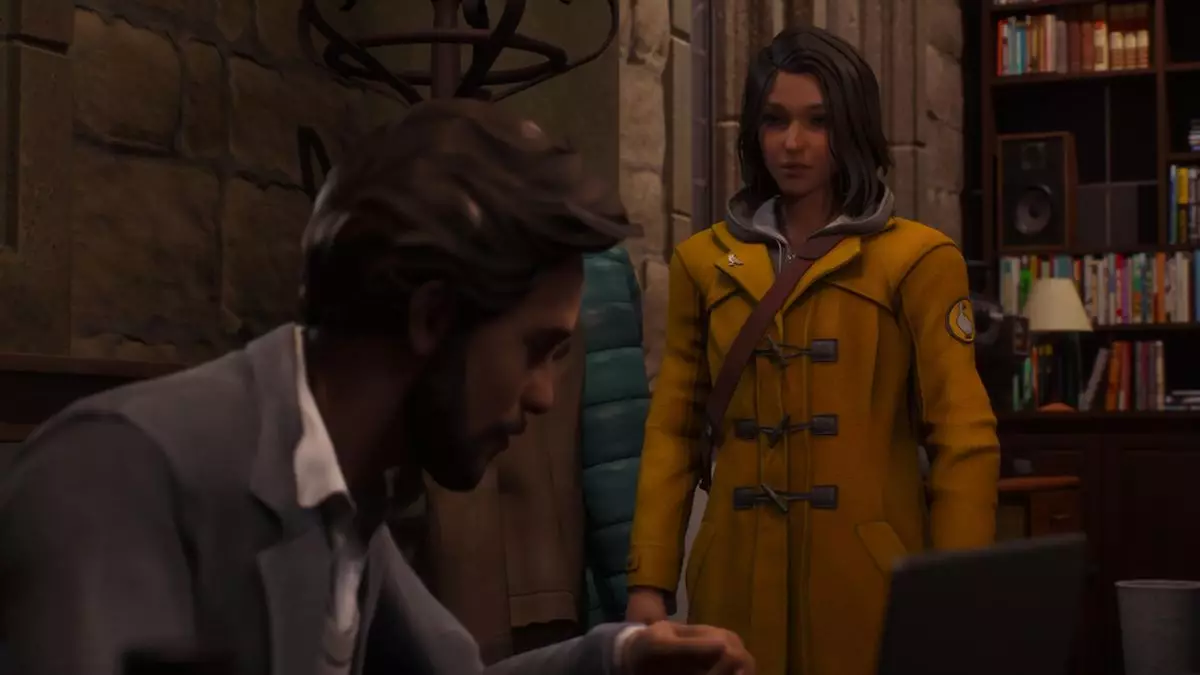In the compelling narrative landscape of Life is Strange: Double Exposure, players are immersed in a web of secrets and emotional complexity. The game not only challenges players with prima facie decisions but also brings forth critical investigative elements that propel the plot. One such moment—an encounter with Lucas’ office—serves as a pivotal point to uncover the enigmatic past surrounding Maya Okada. This article seeks to guide players through this intricate phase, all while contextualizing the choices that influence their journey and the consequences that follow.
The Setup: A Tenuous Relationship
As players advance through the Living World, they engage in essential dialogues with characters like Gwen, Yasmin, and Vinh. This interaction lays the groundwork for what lies ahead. Once players finish their discussions, the game’s mechanics prompt them to infiltrate Lucas’ office—a significant action fueled by the desire to uncover hidden truths about Maya, a classmate who met an untimely end. While these moments are layered with storytelling, they also subtly reflect the repercussions of previous choices made throughout the game. Depending on the player’s interactions, Lucas may exhibit varying degrees of warmth or hostility, underlining the narrative’s reliance on player agency.
Selecting the right path early can transform this investigation from simple sleuthing to an emotionally charged experience. This complexity encourages players to reflect on their relationships with the characters. Missteps in prior decisions echo throughout the gameplay, reminding players that every action counts.
Entering Lucas’ Domain
Transitioning into the Dead World timeline, Max enters Lucas’ deserted office, ready to unearth the truth. At first glance, the office appears to be a mere backdrop, but it is rich with interactive elements that are crucial for piecing together the mystery. It is vital for players to invest time exploring the various items scattered around the room; each has the potential to offer insights into Lucas’ character and his connections to Maya and her classmates.
Notably, one could stumble upon a polaroid collectible, hinting at the depth of Lucas’ narrative role. The game’s design, which encourages players to interact with the environment, makes it essential to scour every corner of the office. The deeper players delve into the contents of a filing cabinet—where critical documents are stored—the easier it becomes to comprehend Lucas’ intensely intertwined history with Maya.
One of the more tricky elements of exploring Lucas’ office is locating a key that will enable access to pivotal pieces of information. Some players may encounter a glitch, hindering their progress in this crucial section. However, a simple solution often lies in reloading the last save. Once players manage to find the key hidden beneath a framed photograph on Lucas’ desk, they gain the ability to unlock further compartments within the office.
Unlocking the famous typewriter becomes a landmark task, unfolding another layer of Lucas’ character. The hidden manuscript contained in the typewriter serves as a morally gray revelation: Lucas has been plagiarizing the work of his young student. This act is more than just a plot twist; it embodies the ethical questions surrounding loyalty, betrayal, and the exploitation often present in academic settings.
Acquiring the evidence is merely the first step. The true test comes when Max must confront Safi about these revelations. The dialogue that ensues is fraught with tension, reflecting Safi’s anger about the rumors sparked by Max’s discovery. Regardless of the player’s efforts to justify or explain the situation, safeguards of previous decisions weigh heavily on Max’s interactions with Safi. Thus, the player’s choices resonate during this climactic moment, emphasizing the cascading effects of each decision throughout the game.
Navigating Lucas’ office is not just an act of discovery—it is a crucible that tests the player’s moral compass and the relationships they forge within the game’s intricate narrative fabric. The repercussions of every interaction remind players that the heart of Life is Strange: Double Exposure lies not only in its thrilling mysteries but also in the weight of the choices we make as we journey through it. Engaging deeply with the story ultimately rewards players with a richer understanding of the characters and their multifaceted connections, rendering this segment a memorable part of the gaming experience.


Leave a Reply